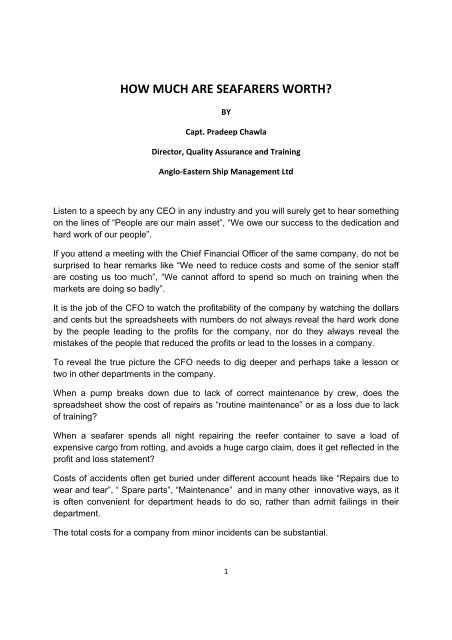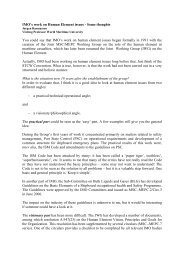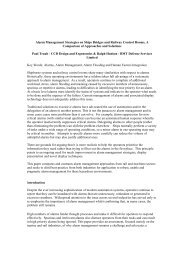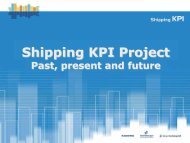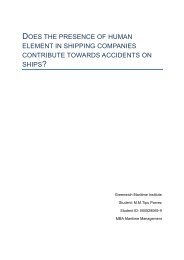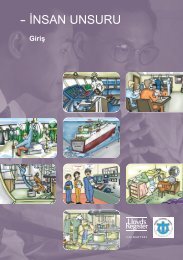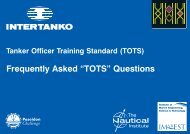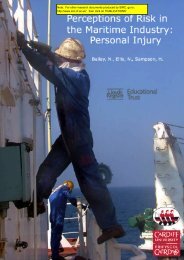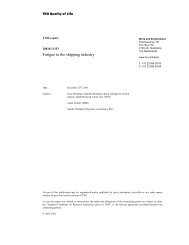HOW MUCH ARE SEAFARERS WORTH?
HOW MUCH ARE SEAFARERS WORTH? - Alert!
HOW MUCH ARE SEAFARERS WORTH? - Alert!
- No tags were found...
You also want an ePaper? Increase the reach of your titles
YUMPU automatically turns print PDFs into web optimized ePapers that Google loves.
<strong>HOW</strong> <strong>MUCH</strong> <strong>ARE</strong> SEAF<strong>ARE</strong>RS <strong>WORTH</strong>?<br />
BY<br />
Capt. Pradeep Chawla<br />
Director, Quality Assurance and Training<br />
Anglo‐Eastern Ship Management Ltd<br />
Listen to a speech by any CEO in any industry and you will surely get to hear something<br />
on the lines of “People are our main asset”, “We owe our success to the dedication and<br />
hard work of our people”.<br />
If you attend a meeting with the Chief Financial Officer of the same company, do not be<br />
surprised to hear remarks like “We need to reduce costs and some of the senior staff<br />
are costing us too much”, “We cannot afford to spend so much on training when the<br />
markets are doing so badly”.<br />
It is the job of the CFO to watch the profitability of the company by watching the dollars<br />
and cents but the spreadsheets with numbers do not always reveal the hard work done<br />
by the people leading to the profits for the company, nor do they always reveal the<br />
mistakes of the people that reduced the profits or lead to the losses in a company.<br />
To reveal the true picture the CFO needs to dig deeper and perhaps take a lesson or<br />
two in other departments in the company.<br />
When a pump breaks down due to lack of correct maintenance by crew, does the<br />
spreadsheet show the cost of repairs as “routine maintenance” or as a loss due to lack<br />
of training?<br />
When a seafarer spends all night repairing the reefer container to save a load of<br />
expensive cargo from rotting, and avoids a huge cargo claim, does it get reflected in the<br />
profit and loss statement?<br />
Costs of accidents often get buried under different account heads like “Repairs due to<br />
wear and tear”, “ Spare parts”, “Maintenance” and in many other innovative ways, as it<br />
is often convenient for department heads to do so, rather than admit failings in their<br />
department.<br />
The total costs for a company from minor incidents can be substantial.<br />
1
Figures given by a leading P and I Club indicate that the total losses suffered by the<br />
industry are:<br />
Human Error Caused Claims( Source: UK P and I club)<br />
• 541$m a year<br />
• 45$m a month<br />
• 11$m a week<br />
• 1.5$m a day.<br />
There is a definite link between the knowledge,skill and motivation level of the<br />
employees and the losses due to accidents( or increased profits due to lack of<br />
accidents).<br />
The finance department needs to understand the famous Iceberg of Accident Costs that<br />
every safety professional learns early on in life.<br />
Considering the huge costs involved, it is a topic well worth the attention of the CFO!<br />
2
CFO’s understand profit and loss extremely well and if all the department heads are<br />
able to separate and identify the costs of accidents and show how the efforts of training<br />
are helping to reduce the accidents and improve the bottom line, the CFO’s would fully<br />
support the investments into training and the seafarers will be considered as a sound<br />
investment rather than an expense.<br />
It is a matter of good teamwork and clear communications between the financial<br />
controllers and the ones who actually control the work!<br />
When the CFO understands the relationship of how the well trained professional crew<br />
translates into higher profits, growth of business and hence more time for him to play<br />
golf, you would have succeeded!<br />
3


